Farm It Forward: connecting young farmers with donated land to grow organic food
Author: Koren Helbig
Go to Source
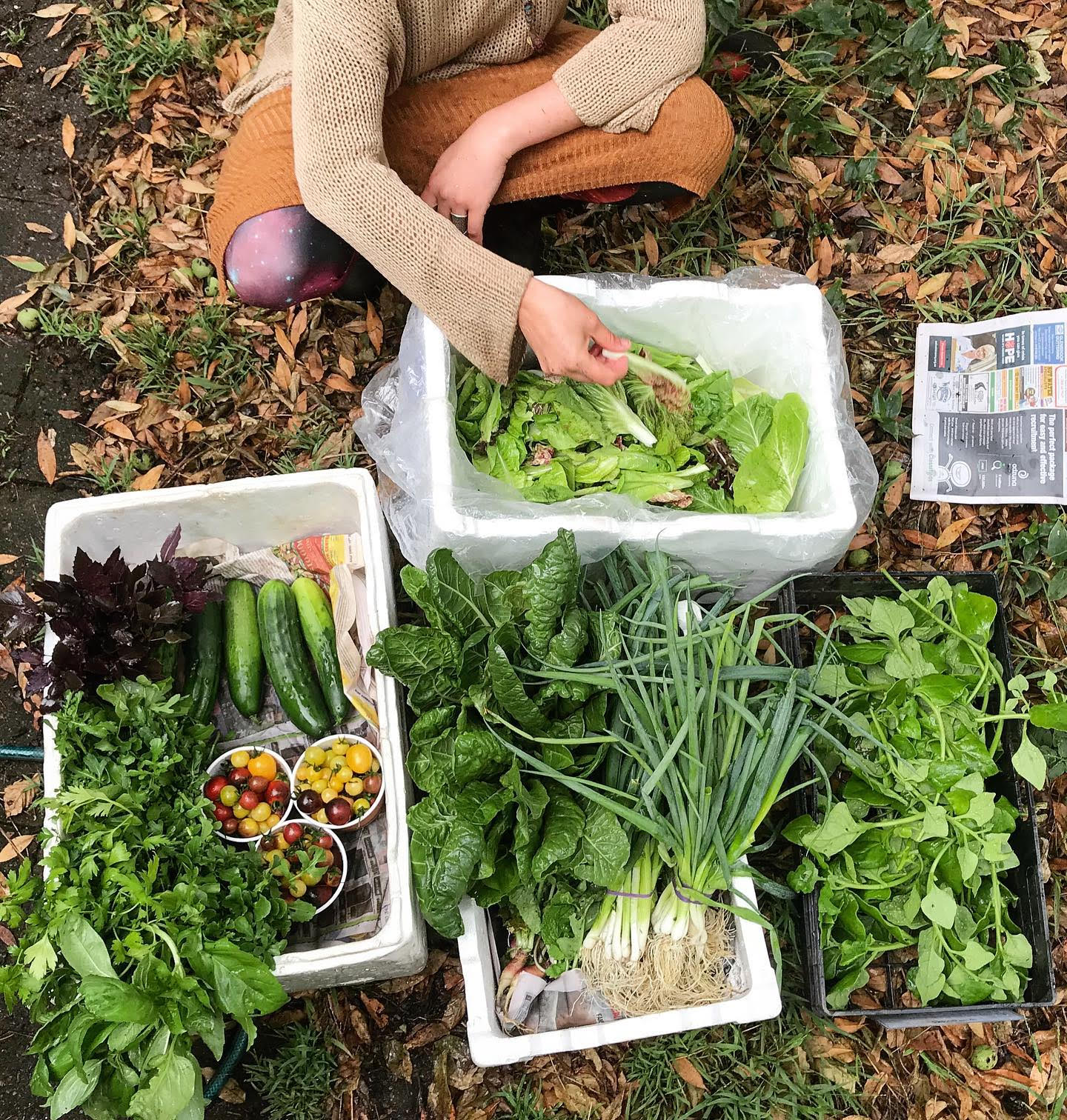
Up in the Blue Mountains, about an hour west of Sydney (Australia), a group of young farmers are growing truckloads of rich organic produce – all on donated land.
They’re growing in backyards, over former lawns, and even atop an old tennis court.
All this is happening via Farm It Forward, a social enterprise that’s all about producing decent local food in urban areas … while gently breaking down social isolation and bringing a community together.
This project is truly special – and we’re chuffed to say it’s headed up by Manu Prigioni, who’s part of our awesome Milkwood crew (she’s a Community Mentor for our Permaculture Living course). Go, Manu!
So, here’s how Farm It Forward works…
Residents donate use of their land for a year, with plots tended by young people in the community – young farmers, paid a living wage by Farm It Forward – plus a host of volunteers keen to develop their growing skills.
That produce goes straight back to the community, into produce boxes for the landowners. Any excess is sold to cafes and restaurants, helping pay the young farmers.
And everyone has a bloody great time while doing all this, it seems.
So, grab a cuppa and let’s sit down with Manu to learn more about land sharing, young farmers, and how Farm It Forward has survived and thrived during the host of disasters that their first year has thrown at them…
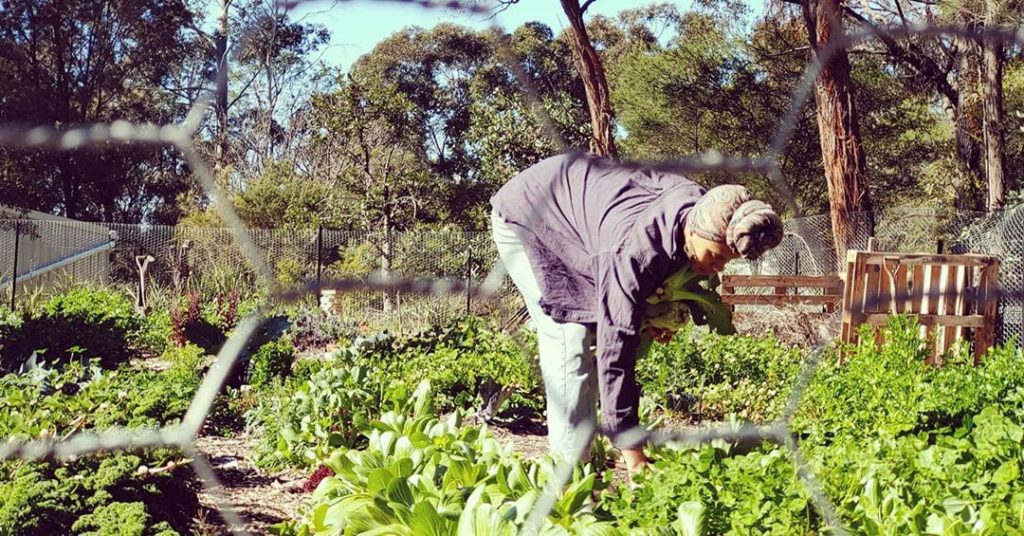
It’s a brilliant idea – connecting young people who want to grow food with residents who have land, but no time to use it. How did you come up with this?
I’m one of the directors of Lyttleton Stores Co-operative and I manage our backyard growers’ system – people can register with us, bring us their excess produce and swap for store credit or do workshops with us.
[Side note: Kirsten previously spoke to Manu about Lyttleton Stores – you can find that lovely chat over here.]
I kept getting people through the doors who had big backyards and fruit trees, but who found it really hard to manage. Maybe they were older and or didn’t have enough mobility, or were commuters and just didn’t have enough time to grow food.
Then on the flipside, I had all these awesome younger people with lots of time and the will to grow, but who didn’t have access to land because it was too expensive to buy or even rent.
It was really a matter of designing an enterprise that could respond to this pattern in the community.
And you’d had your own experience with social isolation too…
Social outreach and reconnection is very much within the main scope of the enterprise, along with food growing and lowering food miles.
That’s completely from my own experience of growing a garden as a form of nature-based therapy – to deal with that feeling of isolation that came after the birth of my children.
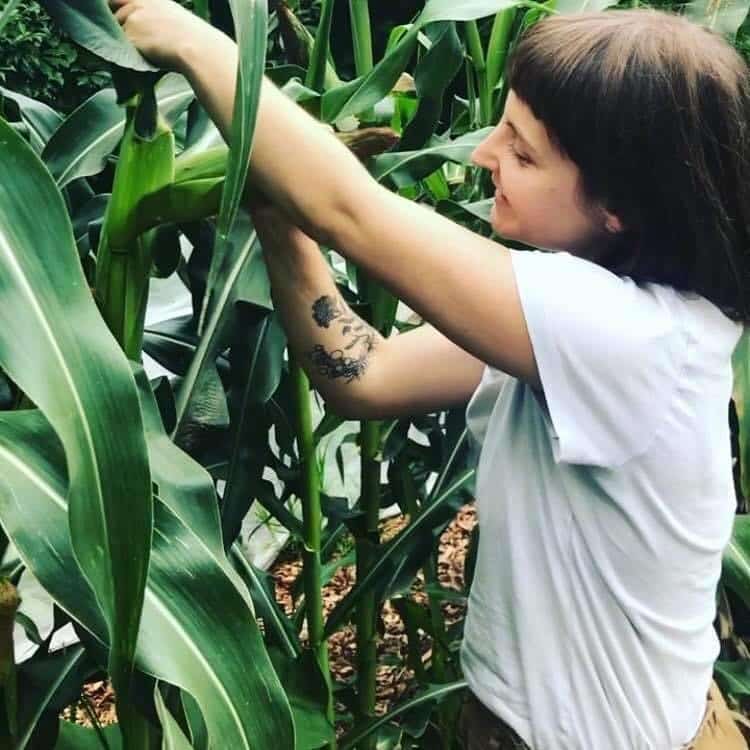
A lot of people in the Blue Mountains and in all peri-urban areas have this dilemma, because of the way we’ve designed our communities – they’re like little office cubicles. We need to be tearing our fences down and communicating with each other.
The residents who donate their land are all people at risk of social isolation, such as older people, recently retired people and young families with small children.
We have one family who are in the same boat as me, with one small child with special needs … just being there for people is very healing.
We have people who’ve lost their jobs because of COVID-10 who come every week to our volunteer sessions, and it’s their sanity. Or people who are writing PhDs, nurses, doctors – just a whole bunch of backgrounds.
It’s become this incredibly special place where people come over and over again. We’ve found it’s a way of empowering individuals.
So you had the idea – what did you do next?
It wasn’t like we just one day decided: “Yep, let’s organise a crop swap.” We really had many years to look at patterns in the community, to be able to design the solution.
Then it was a matter of connecting the dots.
We applied for a lot of grants and thankfully we got really great support from the local council, including help from their Community Development Officer, Colin.
About a year and a half ago, four of us sat down and used the Holistic Decision Making framework to create a context for Farm It Forward. That’s been hugely helpful in community governance and decision making – we haven’t yet had any issues, which is very helpful for a community organisation.
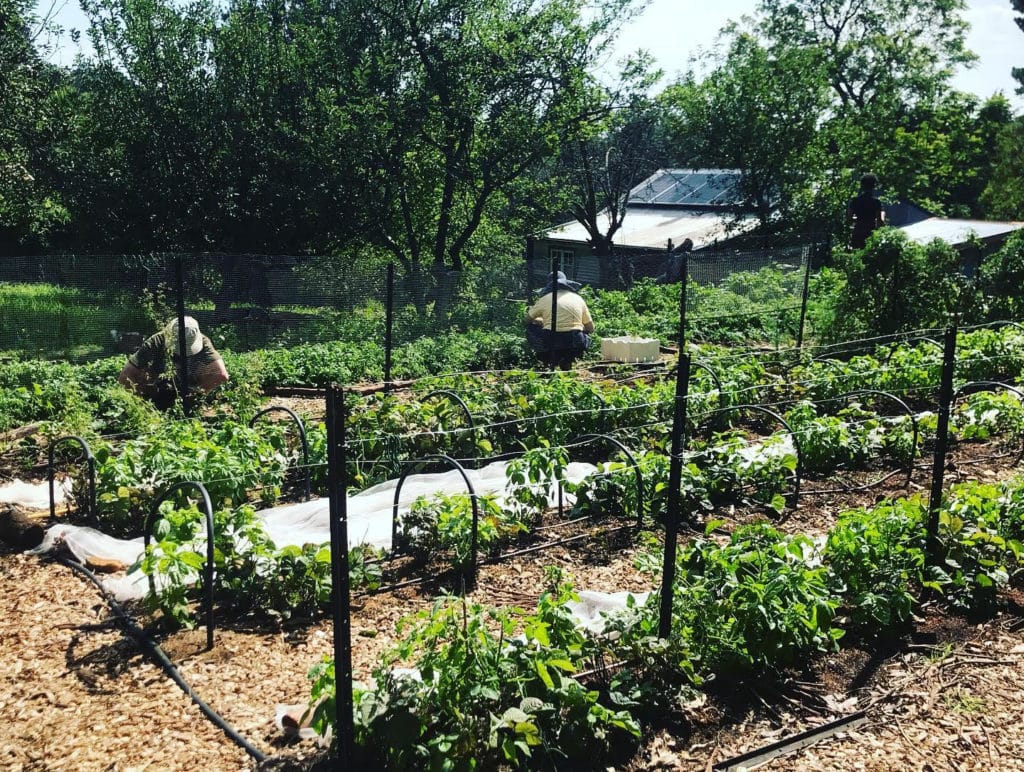
I love that you’re able to pay the young farmers involved in this project. Can you explain how that works?
Our six young farmers are paid for however many hours they work on their plot each week – they all have at least one plot they’re responsible for.
We do have some public funding to help us cover wages, and we also offer services during winter, like designing gardens and giving consults.
The residents [those donate land to Farm It Forward] get veggie boxes during spring and summer. In winter they’re able to pick whatever they need from their plots at any time. All the excess produce is sold to the local co-op cafés and restaurants.
I think the youth of today are working very hard to make a change in society, but often don’t get positive feedback in return. It can become very demoralising. Having an active way in which to contribute to positive change is so important for these guys, who are the future – they’re going to be at the forefront of generating massive change.
These wonderful positive feedback loops happen amongst the group. Older people supporting what younger people are doing. The intergenerational contact is quite special.
It’s the most powerful outlet for young people. It’s approachable, it’s fun and it’s incredibly therapeutic.
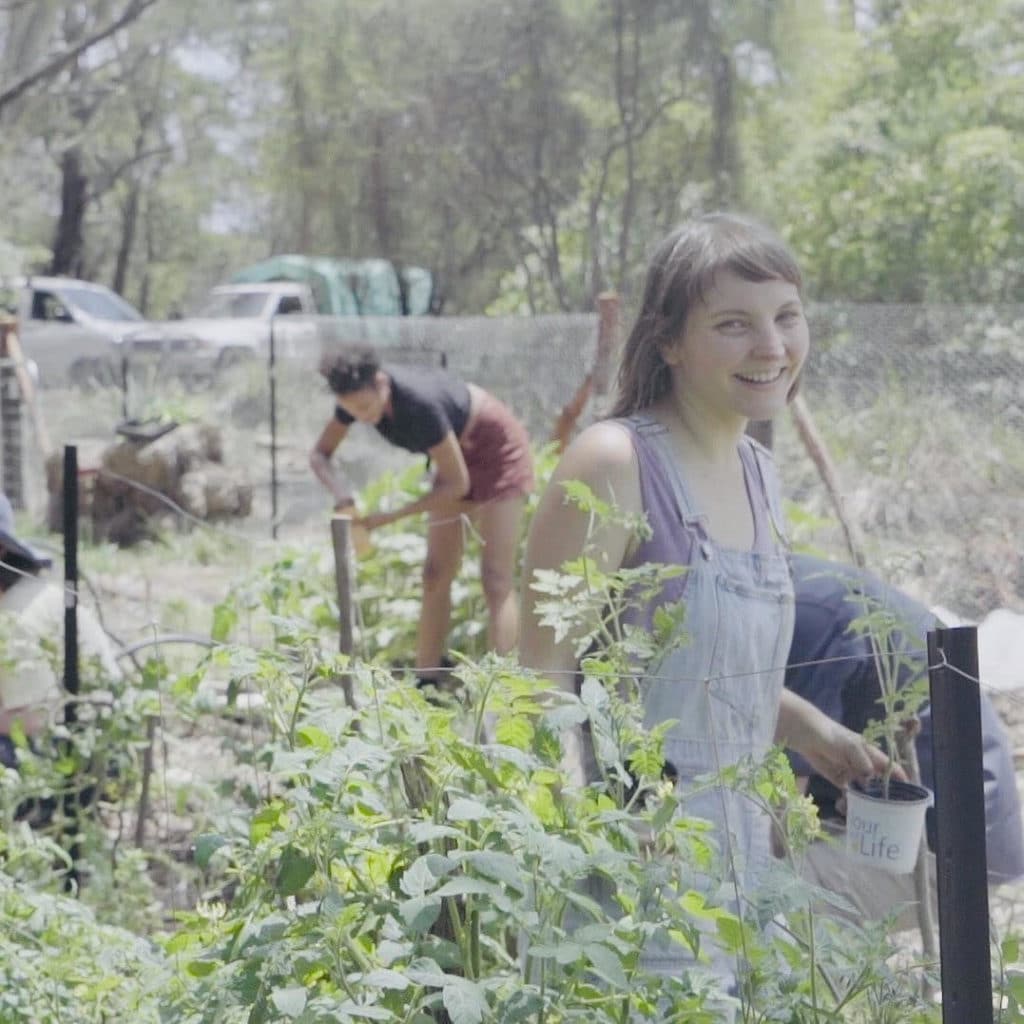
Your first year of growing sounds incredibly challenging – drought, severe bushfires and COVID-19…
We got started during some incredibly challenging times. We had the horrible drought and then we were right in the midst of the bushfires in December. We had volunteers showing up even on days where the air quality was impossible – they’d come wearing masks.
It seemed to really strike a chord. We definitely weren’t foreseeing how much support we’d get. It became a sneaky way to organise ourselves during a major climate catastrophe – we were showing there is actually a lot of food growing in the streets.
Then, during COVID-19, it was the perfect way to get socially distanced social connection.
People were coming and learning how to grow food, and then taking those skills home and growing at home – it was an incredibly useful thing to have when shops were empty and people were panicking.
During the peak of COVID-19, we had this moment when a large food co-op in Katoomba was saying the Sydney Organic Markets were running out of fresh veggies – and asking if they could get produce from us. It was astonishing.
Our peri-urban areas are just absolute food deserts and I think people are dawning to the fact that that’s a really dangerous way to live.
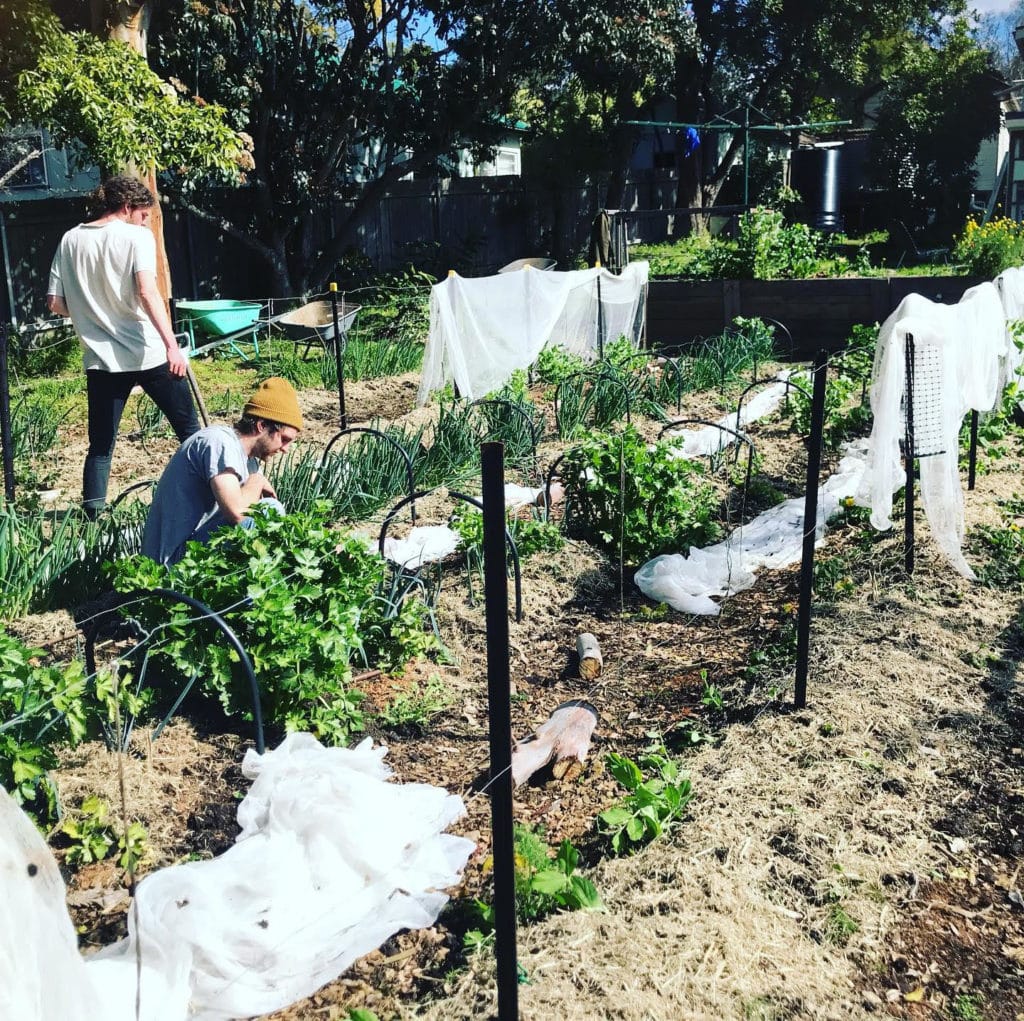
What types of land are you farming on – and what happens to people’s mindsets when you convert ordinary backyards to food production?
It’s a peri-urban setting, so many of our plots are literally in people’s backyards.
Blocks are a bit larger here in the Blue Mountains – usually half an acre to an acre, so we could make this happen without having too many issues with privacy. We just made sure we were really clear about when we would come to work on the plots.
One of our residents, Sylvia, has allowed us to grow atop a very old and overgrown tennis court. She has lower mobility, but she can sit at home and think ‘my garden is growing food and helping gather people’ – that gives her a beautiful sense of being a part of something.
It’s a really simple way in which to make powerful change.
But we mostly grow on top of lawn. People are really sick of having to mow their lawns, so to some people it’s quite attractive having someone else manage their area.
I hope that we’re slowly shifting from lawns as a status symbol – a sign people use to show that they’re not poor and don’t need to grow food – to the idea that growing food is really cool … and lawns are useless!
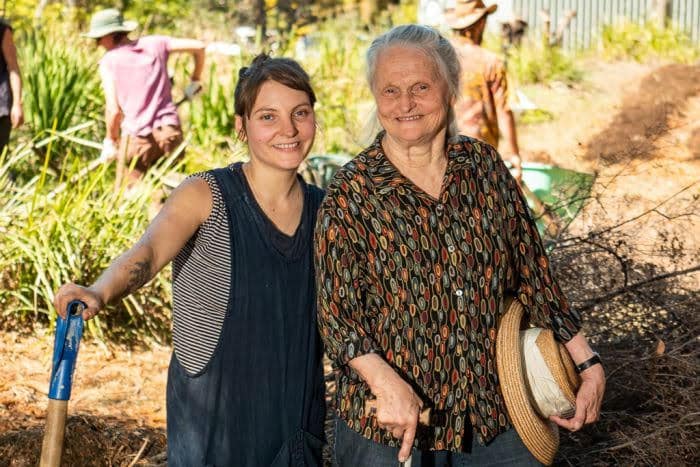
You’re producing a huge amount of food from a very small area – is that right?
We started with four plots and we now have nine , including six market gardening plots. We have about two acres under production now.
We’ve already been able to grow more than a tonne of produce … probably more.
We use complete non-disturbance methods. We don’t disturb any of the soil, we just rebuild soil from scratch, from the bottom up. We add organic matter, we mulch well. Larger scale organic market gardens can’t do some of these things – because we are small scale and have many hands to help, we can.
Likewise, because we have help from our volunteers, we can grow things that require quite a lot of work to harvest.
So there are real benefits to growing in spaces like this.
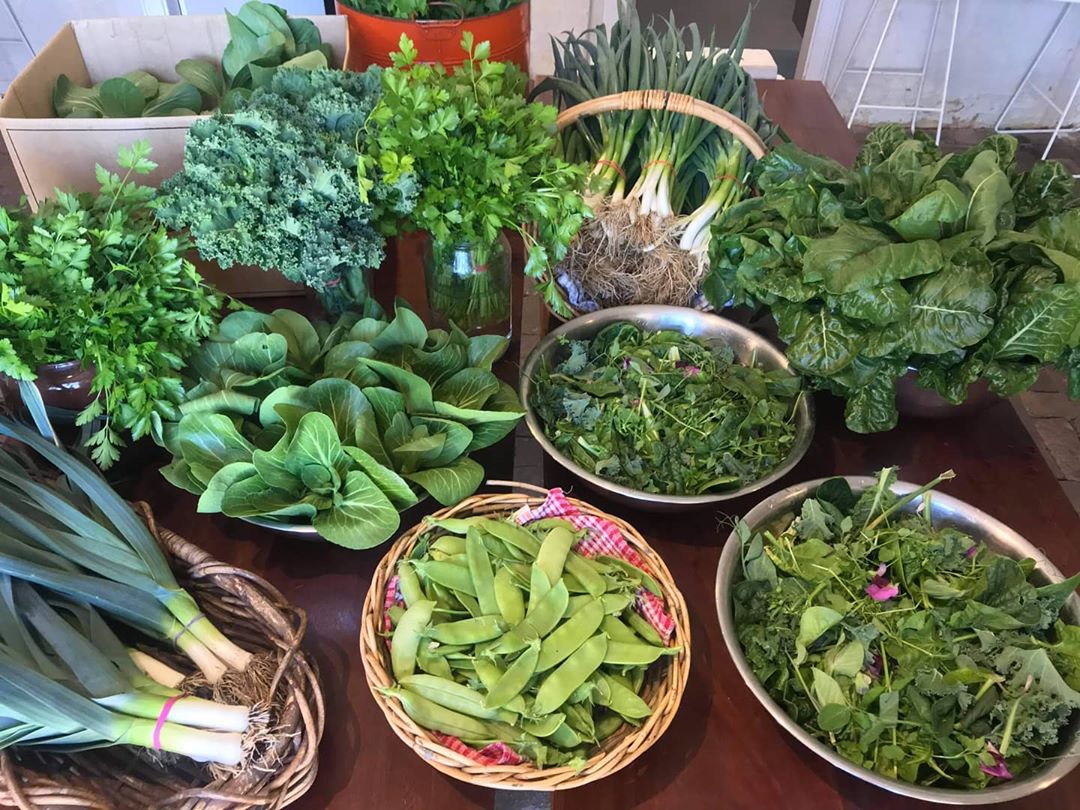
Farm It Forward really seems to have captured people’s imagination – do you think we’ll soon see more projects like it?
When we made the decision to start Farm It Forward, I was on the train and I had a bit of a moment where I knew that this was going to change a lot of things. I am really excited because this model is scalable in the right way – you can easily create a network for this.
It’s a very powerful, decentralised, grassroots organisation of people, a possibility for communities to really take part in their own wellbeing, food and community health. It’s incredibly exciting.
But we were gobsmacked by how quickly it caught on.
The first day we were setting up the first plot, two ABC journos were coming through the mountains. They stopped at the kebab shop and the kebab man told them about us – that’s how we got our first media story and it’s just gone on from there.
And then we had a segment on Gardening Australia … we’ve had people from all over the country contact us and we’ve been holding regular webinar sessions on how to help people create their own.
We didn’t expect it to catch on so quick. But it’s often the case that when something makes perfect, logical sense, it transcends age or bias or background.
David Holmgren says permaculture is a revolution disguised as gardening – that’s exactly what this is.
It’s an incredibly approachable and non-invasive thing to get into, it crosses age barriers, money barriers. We all get therapy from our garden, growing healthy food, being with people – it’s that common ground and simplicity, that only nature can do really.
People are just like: “Of course. Why didn’t we think of this before?”
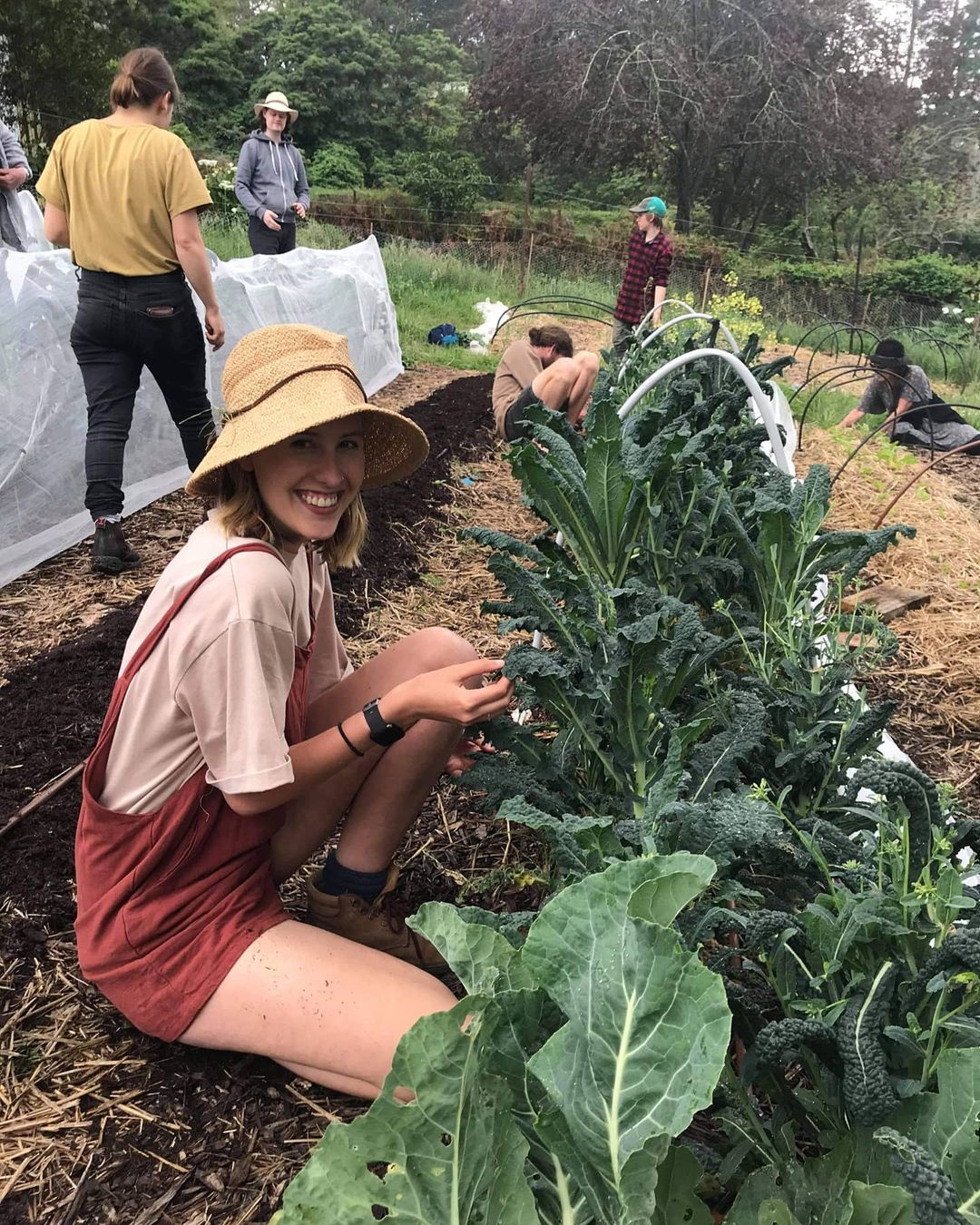
Any words of advice for folk who might want to set up a similar project in their ’hood?
We definitely couldn’t have done it without being auspiced by the Lyttleton Stores co-op – there was already a connective community around that. So we always tell people who want to start: get in touch with your local co-op, your local neighbourhood centre.
But we think our example also helps debunk a lot of blockages – we all want to do this, but we get paralysis by analysis. Insurance, for example. But you just get a good insurance policy and it’s no problem. Or people worry there will be problems with the resident [who is donating land]. Well, no. You’re clear about expectations, set up a written contract and it’s only a year long, so there’s no issue.
I believe this is a real way to show people this is actually not hard to do – you can do it. We’re powering through and showing people that it can be done.
Also, the fact that we manage to be part of the monetary economy, giving our farmers a wage and selling produce, that’s optional. You could very well have a simpler swapping system where the resident and the young person looking after the plot share the harvest coming from the plot.
One difficulty is finding the start-up funding – you need to be good at writing grants. But we’ve had interest from Landcare Australia to develop this further, and are about to become a registered charitable organisation which may assist with that element in the future…
There are not many stories of hope at the moment and I think people are really coming in spades to Farm It Forward, because they can see there is a story of hope here.
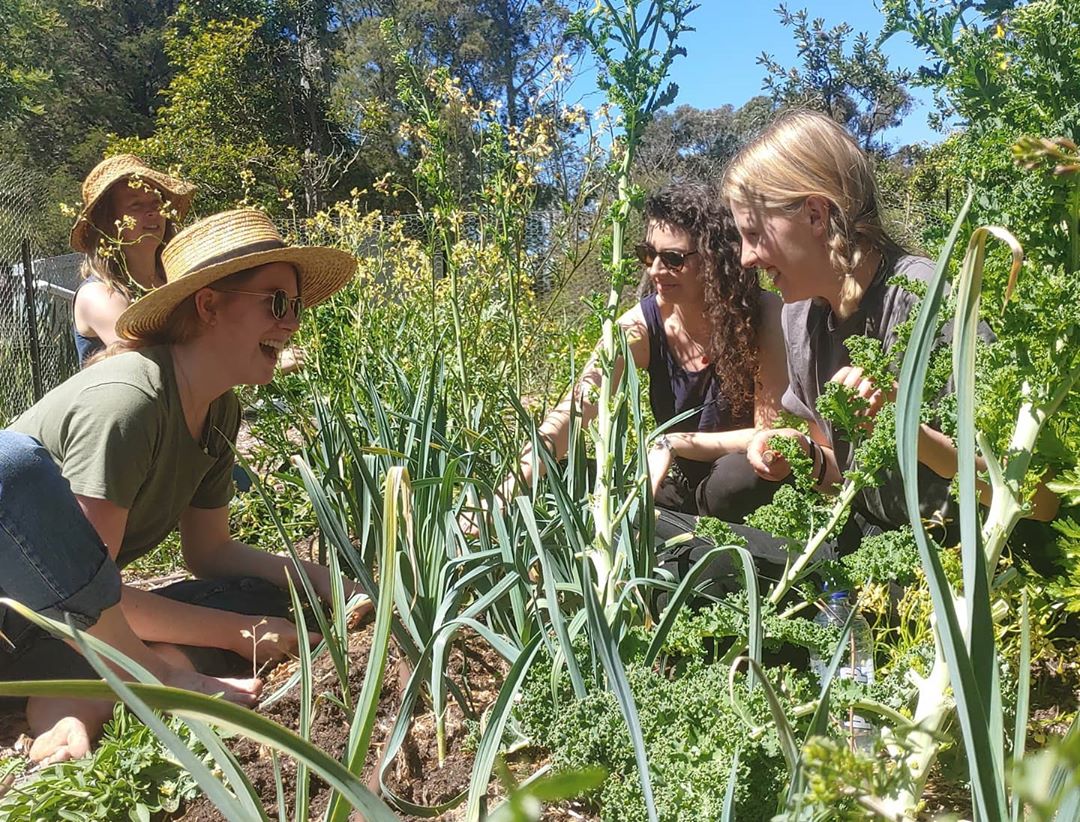
Thanks, Manu! Such an inspiring project – we hope to see many more like it popping up all across Australia and beyond. And hey, if you know of any other similar schemes like this, we would love to hear about them…
Resources
- The Farm It Forward website – and Facebook and Instagram.
- Lyttleton Stores
- Footprints Online Podcast 3 – Sustainable Food System – featuring Manu, among others.
- Gardening Australia’s segment with Manu on Farm It Forward.
The post Farm It Forward: connecting young farmers with donated land to grow organic food appeared first on Milkwood: permaculture courses, skills + stories.
